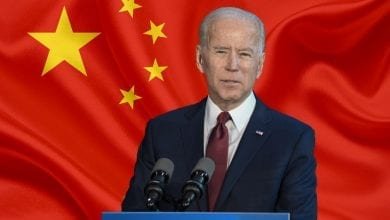Why High Gas Prices Are a Signal of (More) Inflation to Come
Where I grew up in northern Minnesota, it’s easy to see the impact that economic hard times leave on disadvantaged communities. With consumers now experiencing record-high gas prices, it is safe to say that Americans—not just back in my hometown—but across the country, are experiencing undue burden.
For many, rising prices bring times of sacrifice. When Americans are pinching pennies, it’s hardly a comfort to hear that high gas prices can be avoided by simply buying an electric vehicle, as transportation secretary Pete Buttigieg recently advised.
As administration officials stubbornly push for a government-driven energy transition, escalating fuel prices often leave families in a bind, where they must choose between meeting energy needs such as heating, cooling, and filling up their gas tank or purchasing essential goods such as clothing, school supplies, and food. This dilemma, commonly known as “heat or eat,” makes all the difference between keeping a home warm or providing nutrition for little ones. The stakes are especially high for low-income, elderly, and minority groups, who spend a more significant portion of their budgets meeting energy needs.
Unfortunately, high energy prices will eat away at their finances in more ways than one. Price hikes at the pump will likely translate into rising prices in supermarket aisles, retail stores, and more. To understand the relationship between fuel and the prices of other goods and services, consider the classic illustration by Leonard Read, “I, Pencil.”
An economic lesson in the form of a short essay, “I, Pencil,” explains how even a seemingly simple pencil is the end product of a vast and intricate network of supply chains. Read argues that while a pencil may seem unremarkable, no one on earth knows how to create one from start to finish. He demonstrates this by tracing the pencil’s complex “ancestry.”
Read relates, in the voice of the pencil itself:
“My family tree begins with what in fact is a tree, a cedar of straight grain that grows in Northern California and Oregon. Now contemplate all the saws and trucks and rope and the countless other gear used in harvesting and carting the cedar logs to the railroad siding.”
Much of the “gear” Read refers to (trucks, logging machinery, etc.) runs on fuel. Suppose for a moment that fuel supplies decrease in Read’s illustration. The lower supply of fuel leads to more competition for fuel among logging and trucking firms, which pushes up the price of fuel. To economize on fuel, loggers may need to slow production, making lumber less abundant and more expensive for businesses that rely on lumber, like pencil manufacturers. With a reduced supply of wood, pencil production will drop, making pencils less plentiful and more costly, too.
These economic principles extend far beyond just pencils. All consumer goods—from food to clothing to housing to electronics—have “family trees” of their own, and one “ancestor” they all have in common is energy. Machines must be powered, materials must be shipped, and many workers still need to commute. Energy shortfalls, then, make goods and services more expensive across the board, reducing living standards for everyone, especially families in need.
While a market-driven energy transition would be welcome, as economic and technological realities stand now, fossil fuels are an indispensable source for these energy needs. Fossil fuels are a key link in innumerable supply chains. By hampering fossil fuel production, the government is hampering the entire economy in its attempts to force and rush an energy transition. That is leading to painfully high prices, not only at the pump but everywhere, and that pain is sharpest for the poor.
The disproportionate harm that rising energy costs inflict upon our most vulnerable communities foreshadows the challenges many of the rest of us will face if we stick to disruptive policies such as these. Any truly just energy transition campaign will refrain from tipping the scales in favor of specific technologies, but instead allow consumers freedom of choice. Through market forces, we can achieve clean, abundant, and affordable energy.
Content syndicated from Fee.org (FEE) under Creative Commons license.
Agree/Disagree with the author(s)? Let them know in the comments below and be heard by 10’s of thousands of CDN readers each day!



